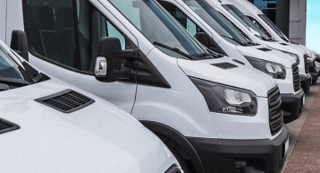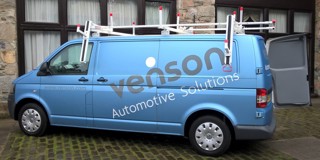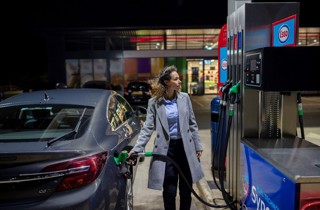Crown Commercial Service hopes the launch of a new telematics agreement will help public sector fleets focus on wholelife cost improvements.

The launch of a telematics framework by the Crown Commercial Service (CCS) will help public sector fleets move to the “next level” in reducing costs.
Previously, the agreements covered four areas – vehicle purchase, vehicle lease and fleet management, supply and fit of tyres and vehicle conversion – most of which focused on upfront costs.
However, fleets should look at the wholelife cost of vehicles to make ongoing savings; and telematics has a key role to play in this, says Tammy Carter, fleet category lead for CCS.
“I joined CCS just under two years ago and we started to look at our fleet strategy for the next parliament and beyond,” she says.
“We knew from benchmarking that, with the frameworks we had in place, the different fleets coming together and the power of that spend, we would drive best value.
“We knew we were getting a good price for public sector fleets buying vehicles and likewise leasing vehicles.
“Although our frameworks such as vehicle purchasing and tyres were looking very much at the upfront cost of getting a vehicle on the road, we identified that what was really key was actually the wholelife costs and understanding the journey of that vehicle until it was disposed of.
“We looked at how we could start to influence that more. So, as a direct response, we wanted to improve the optimisation of a fleet, to improve driver technique, and look at driver training to reduce accidents.
“If a fleet wants to take its savings to the next level, it needs to be able to manage in-life costs once it is operating a vehicle, and we see telematics as being key to effectively doing this.”
The new agreement was developed in conjunction with police, ambulance, local government and central government organisations and features a range of suppliers, all of which are small and medium-sized businesses.
Carter says a number of public sector fleets already use telematics, but “there was a real interest in the technology and through some customer forum groups we identified there was a need for more visibility of how their fleets were being run”.
She says fleets had expressed a significant amount of interest in the telematics agreement since the CCS announced it was developing it.
“We haven’t got any award of contract yet as it is such early days, so it will be a little while before we see those,” says Carter.
“The telematics agreement is a little bit different to the other frameworks as fleet operators will need to go to their commercial board to ask for investment as there is an upfront cost to ultimately save money.”
However, the CCS expects public sector organisations to be able to save £3 for every £1 invested in telematics through a range of benefits, which include:
■ Gaining a better understanding of driver behaviour which can help improve safety by identifying driver training needs.
■ Potential reduction of insurance premiums.
■ Aiding wholelife cost analysis and management through effective driver behaviour management, fuel consumption and future vehicle selection.
“When you look at the telematics frameworks, the actual costs per unit and the cost of the data are not massive amounts when you compare them to other things,” says Carter. “But the ability to drive through savings and initiatives and be able to manage an efficient fleet is what is key.”
The CCS is not currently developing any other new fleet frameworks, but is about to go out to market for the replacement of its tyre framework, as that expires later this year.
Carter says the organisation is also looking to develop a new fleet portal, which could be launched in around 18 months’ time.
“The new portal will be more dynamic in its thinking,” she adds. “The current one allows customers to go in and ask for quotes for any vehicle, and it will return them from all leasing companies.
“Likewise, fleets can get current prices of vehicle purchases, but at the moment they have to say ‘I want a quote for a Vauxhall Astra’, for example. We want to move to more of a ‘I need a car that can do this, or a van with this payload, what is the best fit for this requirement?’ dynamic and it will come up with all appropriate vehicles.
“That dynamic thinking will ultimately bring the frameworks closer together.”
GET THE MOST FROM THE CCS FRAMEWORK
Fleets should take a holistic, forward-looking view of their operation to make the most of the CCS framework, says Tammy Carter.
“For the vehicle purchasing agreement, fleets should make sure they are really thinking about their fleet and what it’s going to be in the future, so they can aggregate their own volume, if not the volume with other organisations, as well as looking at the specifications of the vehicles that they want to use,” she says.
“In terms of the fleet management and leasing agreement, we have our fleet portal which fleets can use to get value, but they can also use the expertise of the fleet management and leasing companies listed on the framework to help drive savings.
“However, I think our big recommendation to all of the customers is to look at wholelife costs, and to understand that they need to forward plan,” she adds.
“Ultimately, organisations need to determine what they want their fleets to do and what the best fit is for that, rather than keep replacing vehicles like-for-like.”





















Login to comment
Comments
No comments have been made yet.